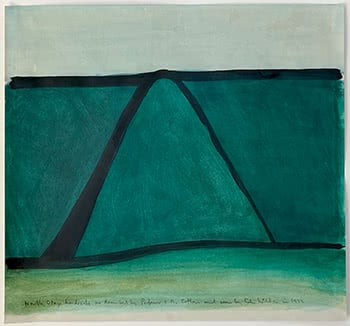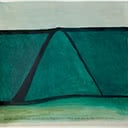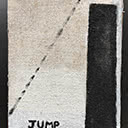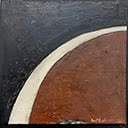North Otago Landscape as described by C A Cotton and seen by Colin McCahon 1972
45.5 x 49.2 cm
est. $90,000 - 130,000
PROVENANCE Elizabeth Steiner Collection Purchased from Important New Zealand Works of Art, Webb's, 18/4/1991
Colin McCahon database record number cm000535
Colin McCahon first got to know the austere North Otago region when he attended primary school in Oamaru for two years, and bonded with the local landscape. He often later revisited the region both in person and in paintings and in 1967 exhibited 25 North Otago Landscapes at Barry Lett Galleries in Auckland. In 1969 he produced a well-known screen- print called North Otago Landscape, one of the Barry Lett Multiples, which further simplified that landscape to a band of sky at top, a band of plain at bottom and, in between, a wider dark green band featuring a parabola shaped hill outlined in black.
Later again, this screen-print became the template for a group of eight watercolours, all inscribed with the unwieldy title: North Otago Landscape as described by Professor C. A. Cotton and seen by Colin McCahon in 1972; they were exhibited that year at Oamaru Public Library. The present work is one of this group.
Two factors seem to have stimulated McCahon to make this series in 1972. First, in the early seventies he taught several summer schools at Kurow in North Otago, thus renewing his familiarity with a loved landscape. Second, he had recently engaged in correspondence with his friend Ron O'Reilly about the early impact on his work of the illustrations of the geologist C A Cotton, author of a classic book about the New Zealand landscape entitled Geomorphology (1922);
McCahon and his wife were given a copy of the third edition as a wedding present in 1942 but he had already discovered the book at the Dunedin Public Library. He told O'Reilly: 'I loved his drawings for the way they told about things. I have since then constantly referred to Cotton to explain what it is I have actually seen...I was interested in Cotton through having lived in North Otago for 2 years & having already started my love affair with the place; Cotton told me about it. Nobody told me about Cotton I just found him on a book shelf' (quoted in Simpson, Colin McCahon: There is Only One Direction, AUP, 2019, p. 48).
Among the eight closely-related watercolours, this particular example is notable for the vibrant green of the central band enclosed by thick black lines which also inscribe the parabolic hill, and for the contrasting pale bands representing sky and plain. The painting has the lucid simplicity of a Cotton drawing, a diagram in a text book, a landscape reduced to essentials in order to explain how the landforms evolved. In such works McCahon was paying homage to one of his earliest mentors in the artistic treatment of the New Zealand landscape.
PETER SIMPSON





